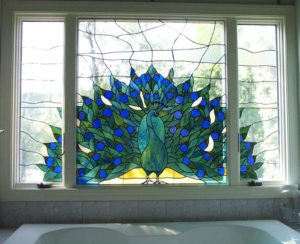 People who move into homes with stained glass windows often clean everything but their stained glass windows. Why is that? Could they fear they’re going to break them if they dare get near them or touch them? Perhaps.
People who move into homes with stained glass windows often clean everything but their stained glass windows. Why is that? Could they fear they’re going to break them if they dare get near them or touch them? Perhaps.
Ideally, if you have stained glass windows in your home or office and you want to clean them, for whatever reason, the safest way to do so is to just use a soft dry cloth to dust them.
Keep This Process in Mind
Sometimes stained glass gets dirty enough to warrant a more intense approach to cleaning, such that a person adds distilled water on their soft dry cloth. If a residue appears, then it’s time for a cleaner that’s free of ammonia and vinegar, as well as pH-neutral and non-abrasive. If you can find Seventh Generation Natural Dish Liquid in a store like Target or olnline then use that particular product.
Assemble your items together before you decide to clean the window. You’ll want a bowl to mix distilled water and the dish soap in, along with your soft cloth– microfiber works well. It’s also a good idea to have a towel or two on hand, which can be placed on the windowsill to catch drips.
Mix a lot of distilled water with a little dish soap in the bowl. Then soak the cloth in it for a couple seconds, wringing it out as you pull it out of the bowl. Ideally, you want to have a damp– not wet– cloth for cleaning the surface of your stained glass window(s).
Start at the top of the window and work your way downward. If you encounter a stubborn spot, rub the cloth firmly against the glass without applying too much pressure that might crack the window. In order to get at the edges and corners of the glass, you can use a cotton swab. Dip it into the water and soap mix and use it to clean the “hard to reach” areas. If your stained glass is divided into individual sections, go section-by-section with the damp cloth. After you wipe each section down with that, use a second cloth– a dry one– to dry it off; a paper towel will do the job if that’s all you have available.
What to Do With Older Windows
Since some older stained glass window patterns are held together with lead, keep in mind that lead won’t harm you if it’s just sitting there. When lead becomes a problem is when it’s heated and/or dust comes off it when it’s being sanded or sawed– you don’t want to inhale that air. Generally, cleaning lead will not cause you ill health, so don’t worry. If, by chance, the lead has oxidized such that it went from a dark color to powdery white, you can put on some gloves and wipe that powder away with a cloth. Then throw away both the gloves and the cloth after you’re done. Should you get nervous about cleaning around lead, it’s best to ventilate the workspace, wear a respirator, and keep pets and kids away from the spot while cleaning the window(s).
If you need stained glass windows restored or cleaned by an expert, contact Cumberland Stained Glass today.
